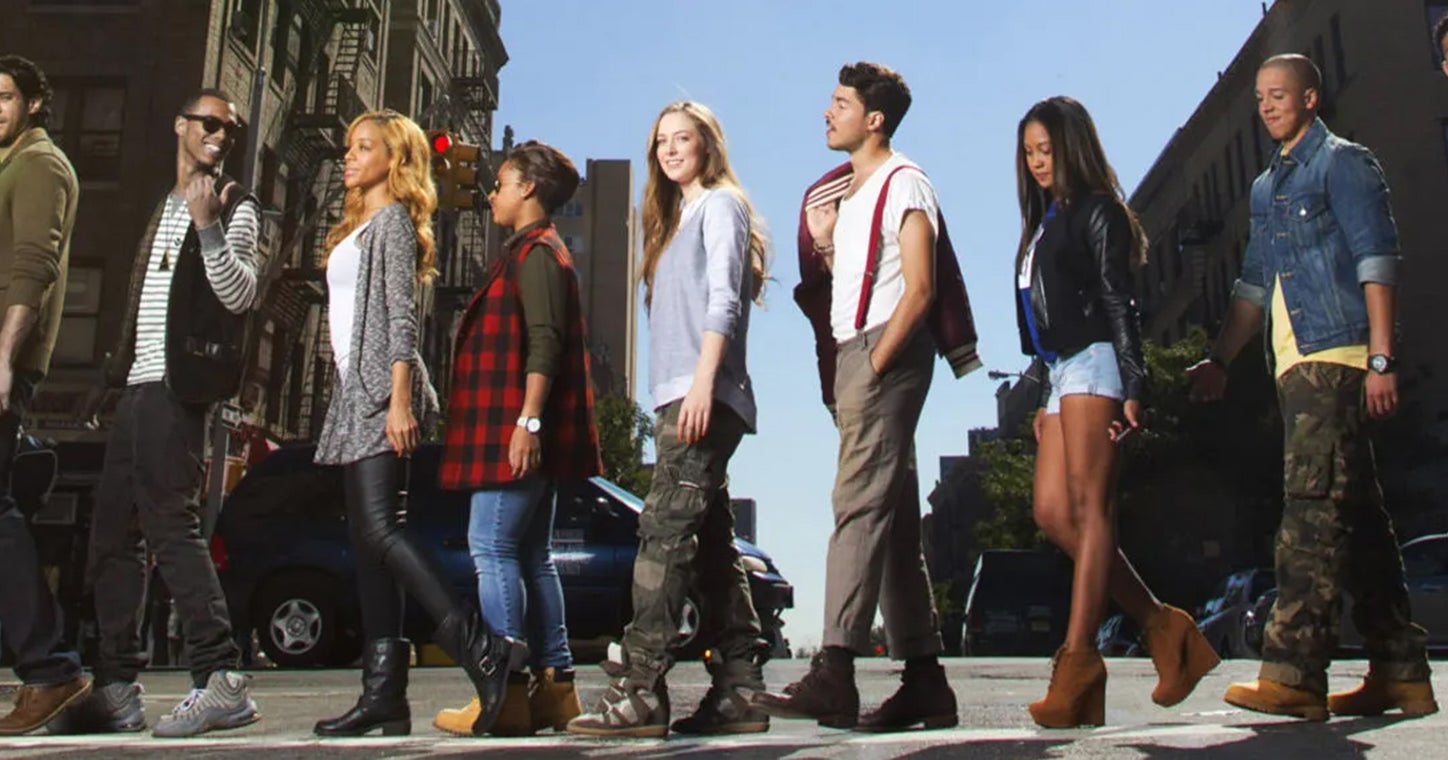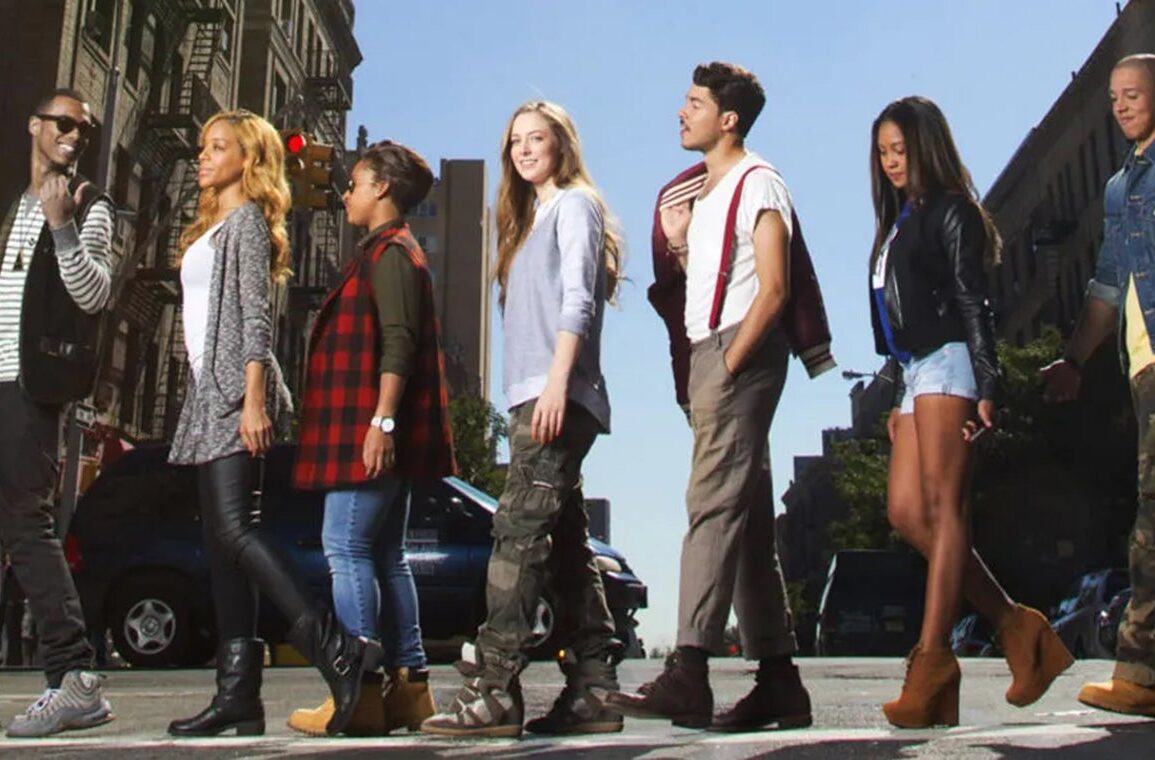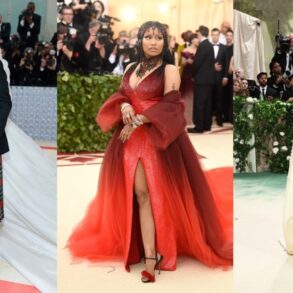
As we reckon with reality television — particularly those with negative work culture, violent outbursts, and the increased fabrication of relationships and scenarios to create more drama — there was one docu-reality show on MTV that went in a different direction: Washington Heights. The show, which aired in 2013, centered on a group of Dominican friends from the area who revealed their personal lives and struggles in pursuit of their dreams. However, after just one season, the network cut the show short, making it a blip in the lives of young Latines.
The MTV program followed the lives of eight 20-something-year-olds in the tight-knit Dominican enclave that has honored the island’s traditions while adapting to the New York City lifestyle. The idea for the show was sparked by a group of friends — Jonathan “aka Audubon” Perez, Reyna Saldana, Frankie Reese, Ludwin Federo, Jimmy Caceres, Roderick “Rico” Rasuk, Frederick Rasuk, and Taylor Howell — that grew up together in Upper Manhattan. Distinct from other popular young adult reality TV shows on the network, like The Hills and Jersey Shore, Washington Heights set out to document a group of young people who didn’t come from money as they followed their career and creative pursuits alongside their friends.
“I had just moved to New York, and I got a job in a television station in the Bronx. JP and Nelson [two of the other creators of the show] were already working there. After work, they invited me back to JP’s place in Washington Heights,” Pedro Feria Pino, one of the show’s co-creators, tells Refinery29 Somos. “There were a bunch of people there smoking blunts, and I said, ‘We should make a television show just about this.’ They said, ‘Yes, let’s do it.’ We started renting lenses on the weekend, and we just started shooting interviews with different friends and getting b-roll around The Heights.”
Then they landed on the eight friends, everyday young people of color working through the challenges of being lower-income children of Latine immigrants while trying to create their own version of the American Dream.
After two years of shooting, the show caught the attention of big networks that were interested in platforming it. “There was a bidding war between MTV and VH1,” Feria Pino, who is now one of the the producers of Love & Hip Hop: Miami, says. “Then they actually hired Gigantic Media to produce it, and the deal was to hire us to film the show. We [Pedro, JP, and Nelson] were executive producers and camera operators.”
With promising ratings, the show debuted on MTV on January 9, 2013. Throughout its 11 episodes, the program highlighted what it was like for Black and Brown Latine kids to carve out careers for themselves without intergenerational wealth or industry connections. Audubon pursued a career as a rapper. Frankie was a spoken word poet and writer. Jimmy had hoped to become a professional baseball player. Rico wanted to be an actor. And Fred was interning in the fashion industry. It also portrayed the everyday challenges that get in the way of some folks reaching their career goals: There were encounters with the law, reconciling with estranged, incarcerated parents, friendships turned into situationships, and the reality of race, class, and privilege with the group’s sole non-Latine white cast-mate, Taylor.
Despite its refreshing portrayal, the ratings quickly tanked and, upon the first season finale in March of the same year, the network decided not to renew the show.
Ten years later, many of the cast-mates still lament that decision. For Audubon, who is now 36 but was 25 on the show, the program’s format had potential to be replicated among other friend groups in his neighborhood and communities like it throughout the country. “Every season we could have shown a different group of people, and even into other neighborhoods in New York or even other states. It could have been something really big,” Audubon tells Somos.
On the show, Audubon wanted to make a name for himself through his music. At the time, he often performed at popular venues in Washington Heights and other parts of Manhattan to boost his visibility. But after the show ended, life took a different turn. While labels had initially reached out to work with him, interest faded when the show was canceled. “By now, many careers would have been launched. By Season 2 or 3, I would have started my own label and signed artists,” Audubon reflects.
Although he is still working on his music, Audubon moved to Miami in 2019 to establish a creative podcast business. However, when the Covid-19 pandemic hit in early 2020, the idea was no longer viable. He leaned on creating music and making money through songwriting and production until he became a freelance producer for several marketing agencies. He eventually landed a position as a project creative manager for a luxury brand, where he is now.
Unlike Audubon, 32-year-old Reese, known around the way for her poem “Uptown,” a love letter to Washington Heights that she performed on the show, still lives in the neighborhood. During her time on the show, she was 21, had just dropped out of college, and had aspirations of writing professionally. “It was an exciting experience, and I still feel like that until this day,” she tells Somos.
The show, which she calls historic for its representation of Dominican American youth, opened the doors to several keynote speaking gigs and opportunities to share her poetry. Ultimately, she returned to school for early education. She ended up in hospitality and then worked in sales. She now leads sales at a theater magazine and has two self-published books: a collection of poetry and a collection of essays and prose that came out in 2022 called In Flux: From digital to analog.
The rest of the cast have also continued their creative pursuits off the screen. Saldana recorded and released some dembow and rap music in 2020, which Audubon produced. Ludwin is now a rock star, playing guitar with the punk band Bad Vacation. And Fred is a successful furniture designer. There’s not much information on Rico, Taylor, or Jimmy.
To be sure, Washington Heights wasn’t a show that centered on meaningless infighting and fake or production-coerced storylines; it looked at the lives of a group of actual friends that already had real-life histories that they let play out on the screen. According to Audubon, this is partly why the show failed. “I think initially the network saw they couldn’t control or get what they needed from us,” Audubon says. “MTV was looking for internal conflict, and they coached us about the conflict. They wanted this internal beef between us, but we were friends. I’m glad we didn’t do that because I’m still friends with them.”
Additionally, Reese believes the show didn’t receive a bigger reach because it didn’t fulfill the myths of Latine young people that exist in the American popular imagination. “People felt it was inauthentic to Dominican culture, which is strange because we grew up in The Heights. I don’t think at that specific time all of America was ready to see young Latinos trying to make it in New York City. I don’t think they were ready to see us in a positive light,” she says.
One decade later, canceling Washington Heights still feels like a missed opportunity. The show offered an honest and nuanced perspective of Black and Brown Latine communities, including the longings, the challenges, and the emotions that arise among those struggles. While reality television had the chance to humanize communities that continue to be portrayed with tired and limiting stereotypes, it instead tried to mold real people into villainous tropes. And when the young Latines refused to perform for the white gaze, the network called it quits — proving off-screen what the show’s cast was also portraying in front of the camera: In an unequal U.S.A, not everyone has the privilege and access to follow their dreams and reach their full potential.
This post was originally published on this site be sure to check out more of their content.







